Longevity Guide
Introduction
Whatever your mind tells your body to do, it does. To bring your independent self into harmony with the future, you must take charge of your activities. The accumulation of many different types of molecular and cellular damage over time is the fundamental basis for aging. As a result, one's physical and mental abilities decline with time, one's susceptibility to disease increases, and one's life expectancy shortens. These alterations are not constant nor linear, and they are only tangentially related to chronological age. (1) Older people's health is negatively affected in every way by ageism. Life expectancy is lowered, mental and physical health deteriorates, rehabilitation from a disability is slowed, and cognitive decline is hastened. (2)
Although chronological age is associated with several disorders and diseases that are commonly associated with advancing age, it is not a reliable indicator of a person's functional ability, well-being, or mortality risk. In contrast, a person's biological age may be used to gauge their rate of aging and give insight into their general health. Aging clocks are computational models (e.g., elastic net) that employ a set of inputs (e.g., DNA methylation sites) to create a prediction, and these predictions are considered to offer estimates of biological age. Many age-related illnesses, social factors, and mental health issues have been linked to an increase in biological age as indicated by aging clock research during the past decade. This rapid aging is associated with an increased danger of dying young. Figure 1.
Disclaimer
The content here is not intended to replace your relationship with your own medical practitioner. Always speak with your doctor before using any of the information on this website. Individual results may vary. Some of the links within this resource are affiliate links
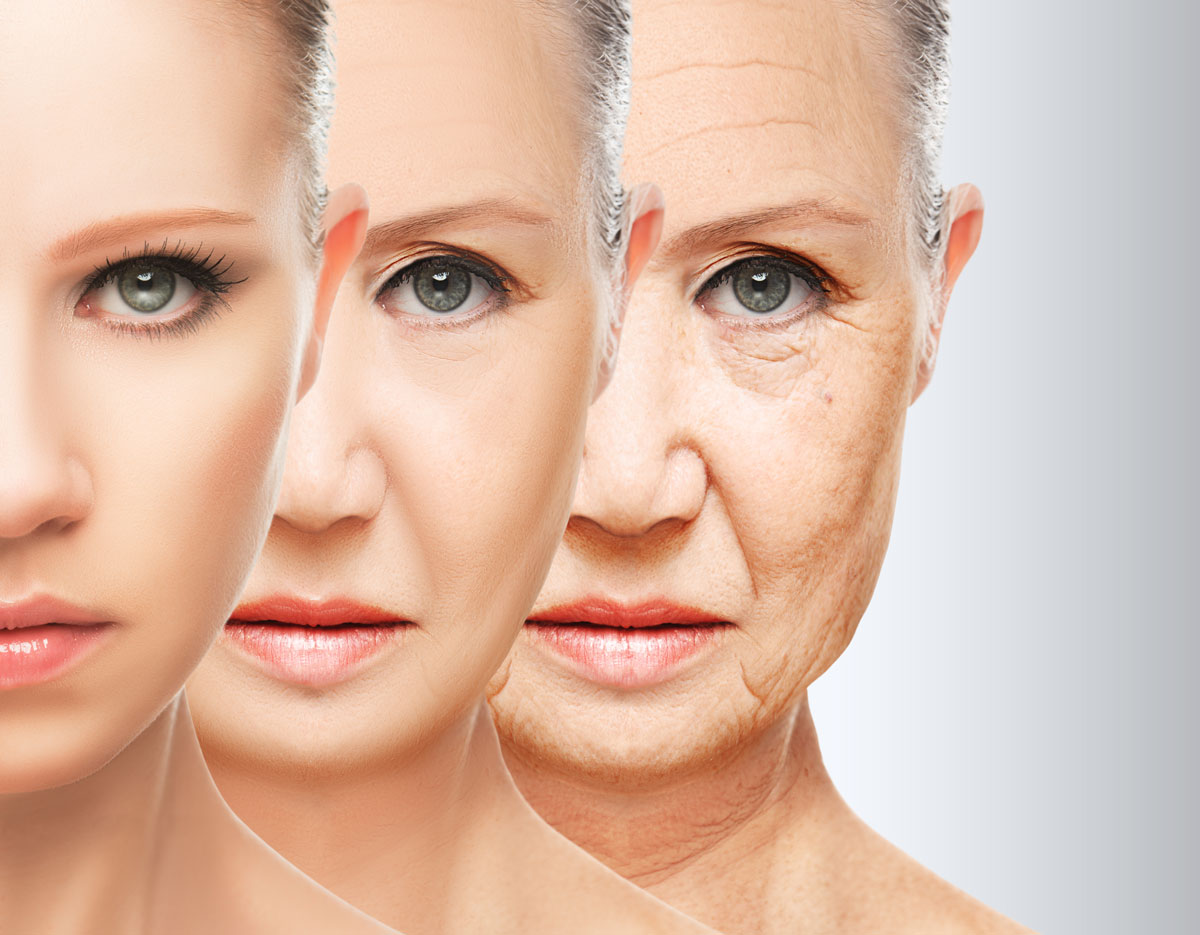

Further studies have shown that the estimated biological age responds differently to various therapies. Many interventions have been shown to be effective in delaying or even reversing the aging process in human studies, including calorie restriction, a plant-based diet, lifestyle adjustments including exercise, and vitamin D3 supplementation. High-quality sleep, exercise, and a nutritious diet have all been linked to slower aging in observational studies.
The best plan for a healthy future:
Blood Tests every 90 days to detect diet-induced inflammations.
Micronutrients test. This was to understand the insufficiencies in the body and how to address them with supplements, vitamins, and food
Microbiome analysis for gut health
Blood glucose monitoring
Neuroendocrine panel
Extensive testing for checking cardiovascular health, bone density, and to detect oxidative stress, cancer environmental toxins.
One meal a day.
For many of us, the daily routine probably sounds like a living hell.
Get up every day at the same time, and take your vitamins and supplements. Exercise for at least an hour, consume a green juice spiked with creatine and collagen peptides, and finish it with a rinse of tea tree oil and antioxidant gel for your teeth. To help get a goodnight’s sleep put on blue-light-blocking spectacles at least two hours before bedtime.
1. Lifestyle Modification has a potential to Reverse Aging
Scientists have long understood that what truly lengthens your life and keeps your later years healthy are the basics we’ve known about for ages: Eat a healthy diet filled with vegetables, exercise regularly, invest in healthy relationships, reduce stress, and get enough sleep, for example. (6)
Following are the major requirements that our body needs to stay healthy and young:
Macronutrients
The key to a healthy diet is moderation. Energy, muscular growth, and basic physical processes all require the consumption of macronutrients like protein, carbohydrates, and fat. Focus on eating healthy meals, rather than dieting, to maintain your optimal level of health. Avoid trans-fats, which are commonly found in processed or convenience meals.
Vitamins & Minerals
The body requires a wide range of vitamins and minerals in addition to the three macronutrients. Vitamin D aids in the absorption of calcium, which is essential for healthy bones, while iron plays a part in the formation of hemoglobin, which carries oxygen throughout the body. Folate, magnesium, selenium, zinc, and the vitamins A, D, E, K, and B complex are some other vital nutrients. The Centers for Disease Control and Prevention acknowledge that taking a multivitamin every day can be beneficial to health, but they stress the importance of receiving all the nutrients you need from food instead. In addition, making meals at home and opting for fresh foods over boxed or canned things is the easiest way to reduce salt intake, which can help prevent hypertension and other disorders. (7)
Exercise Build Muscle
Consistent physical activity complements proper eating as a means of maintaining a strong and healthy body. According to the Cleveland Clinic, regular exercise has many other health benefits, including the maintenance of bone mass, reduced blood pressure, cholesterol, and blood sugar levels, decreased stress, and enhanced sleep. Cardiovascular activity, strength training, flexibility training, and balance and agility drills are the four cornerstones of a well-rounded fitness regimen. Talk to your doctor about the best and safest way to start exercising if you've been inactive for a long time.
Adequate Water Intake
According to the CDC, the amount of water your body requires to keep healthy varies depending on your level of physical activity and the environment in which you reside. Water is essential for body temperature maintenance, joint lubrication and cushioning, waste elimination (urination, sweating, defecation), and spinal cord protection. Have a water bottle with you at all times to ensure you get enough fluids. It's important to stay hydrated before, during, and after exercise. The old adage about consuming 8 glasses of water a day is no longer relevant. Women should aim for 2.2 liters per day, while men should aim for 3 liters per day of water consumption.
Acquiring 10 to 12 Hours of Sleep
The ideal goal to extend longevity is between ten and twelve hours of sleep every night. Just look at Roger Federer. The man is a tennis legend, and even he makes sure to get enough sleep! In fact, he gets 12 hours of sleep every single day. Athletes and high performers around the world have recognized the importance of sleep in recovery, training harder and better, and staying fit.
Sleep deprivation has been linked to an increased risk of diabetes, cardiovascular illness, and mental problems, as well as an increased incidence of car accidents and a reduced capacity for focus and memory. Create a routine where you get up and go to bed at the same time every day (including on the weekends) if you want to improve the quality of your sleep. Figure 7. Create a relaxing sleeping environment in a cool, dark room with a comfortable mattress and pillow. (7)
Keeping from Gaining too Much Weight
Several U.S. citizens are overweight. Several health problems are associated with being overweight. Several examples are listed below:
- High blood pressure
- High cholesterol
- Type 2 diabetes
- Heart disease
- Stroke
- Some cancers
- Gallbladder disease
Weight-related injuries are another risk associated with obesity. Arthritis in the weight-bearing joints, including the spine, hips, or knees, is a prevalent issue. You may lose weight and keep it off by using a few different strategies.
Skin Protection
Skin cancer is exacerbated by time spent in the sun. The United States has the highest incidence of this kind of cancer. Spending too much time in the sun might cause skin damage. Before venturing outside, always remember to dress in protective gear and use a hat. Always apply sunscreen to exposed areas of skin, such as the face and hands. It serves as a shield against the sun and aids in avoiding skin cancer. Choose a sunscreen that offers protection from both UVA and UVB radiation. There ought to be at least an SPF 15 on it. Don't go tanning or sunbathing. Figure 8.

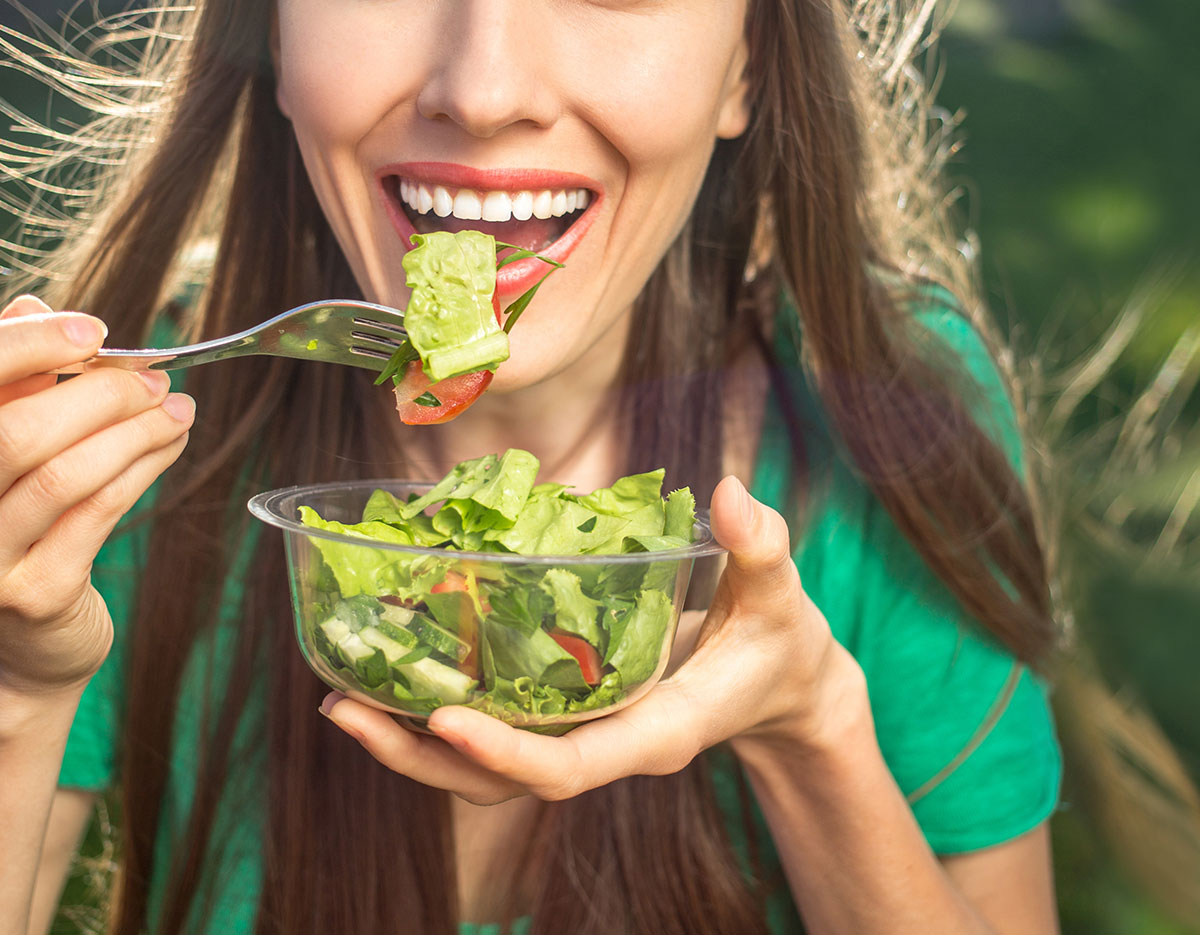
Lean Proteins
Protein plays a pivotal role in our body, from repairing tissues and building muscles to producing enzymes and hormones. As we age, maintaining adequate protein intake becomes even more crucial to combat muscle loss, known as sarcopenia.
Example of Sources of Lean Protein
- Legumes: Beans, lentils, chickpeas, and peas
- Quinoa: Unlike most plant-based foods, quinoa is a complete protein, making it a great choice for vegetarians and vegans.
- Protein-Rich Vegetables: Some vegetables, like spinach, broccoli, and Brussels sprouts, have a decent amount of protein per serving.
- Tofu and Other Soy Products: Tofu, tempeh, and edamame are all high in protein and are staples in many vegetarian and vegan diets.
- Unsalted Nuts and Seeds: Almonds, walnuts
- Fish and Seafood: Fish like salmon, tuna, and mackerel are not only high in protein but also rich in heart-healthy omega-3 fatty acids
- Eggs: Eggs are one of the most complete sources of protein
- Lean Meats: They provide important nutrients like iron and vitamin B12.
- Lean or Low-Fat Dairy: Greek yogurt, cottage cheese, and skim milk are high in protein.
Summary
The best approach to acquire enough of these six necessary nutrients is to eat a diversified diet rich in fruits, vegetables, nutritious proteins and fats, and whole grains. This will also help you receive enough phytonutrients, the beneficial compounds in colored plants that prevent illness. Figure 9. You need these macronutrients and micronutrients for optimal health and appropriate bodily function.
(9)
2. Age Reversal Strategies
There are various strategies that we can adopt to reverse or reduce our aging process and stay young for a longer period of time.
Low Caloric diet
It's common knowledge that people who are overweight may improve their health by reducing their calorie intake. This, however, is the first long-term investigation of calorie restriction in persons who are not overweight. Some disease risks can be mitigated, and even the aging process slowed, by maintaining a calorie deficit of up to 25%. According to research published on Thursday in the journal Nature Aging, reducing caloric intake appears to reduce the rate of aging and prolong longevity in healthy individuals.
This is the first randomized controlled experiment to examine the effects of calorie restriction over the long term, and it was financed by the National Institute on Aging at the National Institutes of Health. It further supports the idea that a low-calorie diet has several positive health effects, including anti-aging effects. (10)
Diet to Prevent Aging
Being older often means you'll become sick more often and have a generally worse quality of life. Alterations in the rate and pattern of cell division, modifications to the gene expression that controls this process, and other cellular alterations, such as mitochondrial malfunction and stem cell depletion, may be among the biological signs of aging. (11)
It's common knowledge that there are 46 chromosomes in every human cell. The DNA strands at the ends of these chromosomes are capped by structures called telomeres. The telomeres shrink and finally die off as we age. Delaying or even reversing aging depends on slowing or reversing this process. A plant-based, whole-food diet is mentioned as a possible means to this end in the study. A plant-based, whole-food diet for three months was associated with a considerable increase in telomerase activity in a study financed by the United States Department of Defense. (12)
3. What a Plant Based Diet Do
Prevents effects of aging on the eye
The dark leafy green vegetables, carrots, sweet potatoes are a rich source of Vitamin A, which keeps our vision clear and healthy even at night. Usually with age, the night vision reduces, so these vegetables help to keep your vision perfect. Flax seed which is rich in anti-oxidants and omega 3 fatty acids prevents macular degeneration due to ageing. Figure 10. The anti-oxidants (carotenoids, lutein and zeaxanthin) found in leafy green vegetables, prevent cataracts by reducing damaging free radicals in the retina. (13)
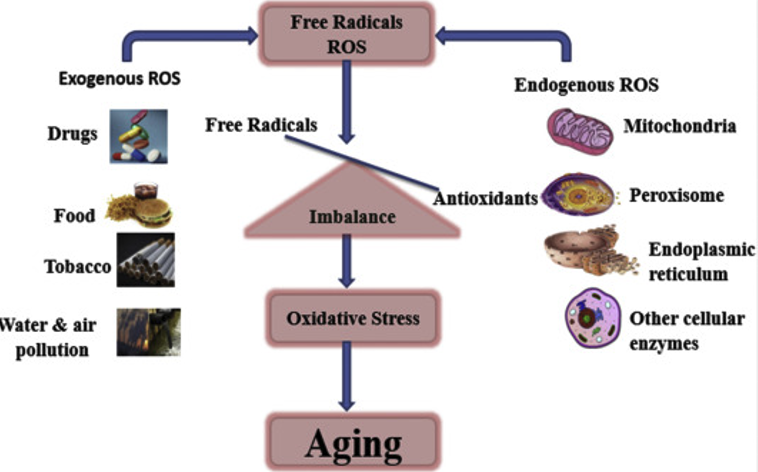
Protects against the deteriorating effects of age on cardiovascular health
A plant-based, whole-foods diet also reduces the risk of cancer, osteoarthritis, high cholesterol, and diabetes. The likelihood of chronic kidney disease complications is reduced further by a plant-based diet. Because of its degenerative nature, the root causes of osteoarthritis may be traced back to genetic, metabolic, developmental, and mechanical factors. Osteoarthritis sufferers can alleviate their symptoms and slow the disease's progression by switching to a plant-based, whole-foods diet. (14)
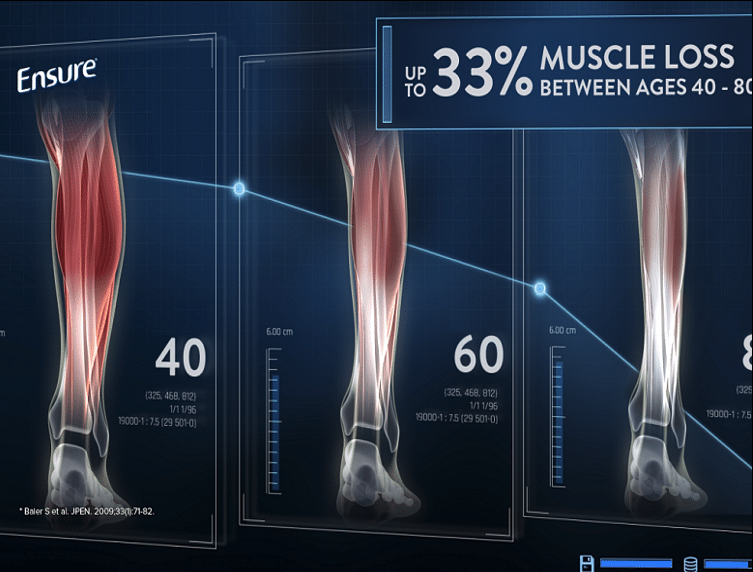
A vegan diet helps keep muscular mass
Did you know body builders like Mike Tyson, Brendan Brazier, and Carl Lewis depend on plant-based diet? This disproves the commonly held belief that protein can only be obtained from animal products. As a result, you can get all the protein you need from plant-based meals while avoiding the health risks associated with eating animals. This contributes to your continued vitality and health throughout time. Muscle wasting due to old age is a common occurrence after the age of 50. Such causes include eating a lot of processed or animal-based foods, leading a sedentary lifestyle that increases the risk of developing age-related illnesses, etc. A plant-based diet that is high in plant-based protein, low in calories, and nutritionally dense can aid in preserving a lean, toned physique. (15) Figure 11.
Prevents skin aging:
As we become older, our skin droops and develops wrinkles. The major cause of this is collagen breakdown in the skin. Lysine, vitamin C, and other antioxidants abound in a plant-based diet. This improves collagen production at the cellular level, which in turn keeps the skin elastic and free of fine lines and wrinkles. Carrots, apricots, kale, spinach, tomatoes, and other beta-carotene-rich vegetables help maintain radiant skin.
Reduce your intake of dairy and processed foods and increase your intake of low glycemic diet items like fresh fruits and vegetables to treat acne and acne scars, says the Harvard School of Public Health in Boston. When you're fighting against the effects of aging on your energy levels, a plant-based diet can be a huge assist. The fiber and other nutrients in fruits, vegetables, nuts, and whole grains help maintain the digestive tract healthy and disease-free. Broccoli, cauliflower, walnuts, and garbanzo beans are all great for the health of your brain. This helps maintain cognitive function and memory as we age. In a nutshell, a plant-based, whole-foods diet helps you maintain your health and beauty as you age in a manner similar to that of Hollywood's elite. (16)

4. Cooking Techniques
There are some cooking techniques that you can use to maximize the benfits of your plant based diet that are as following:
Steam, don’t boil
While cooking, less is more in terms of both time spent in the oven and heat, as well as the amount of liquid used. That's why steaming is such a great method for cooking a wide variety of veggies. This is especially true for broccoli, which has been hailed for its cancer-fighting properties for quite some time.
Broccoli florets with a purple, dark green, or bluish hue on top are more nutritious than those with a lighter green color because they contain more beta carotene and vitamin C.
Peas, cauliflower, and zucchini lost more than half of their antioxidants while boiling, according to a 2009 research. It was concluded by the researchers that "water is not the cook's greatest buddy" when it comes to cooking veggies.
Saute, don’t fry
Deep frying causes veggies to lose moisture, according to studies. But, many veggies taste best when sautéed in a dab of healthy cooking oil, such extra-virgin olive oil. Artichokes, broccoli, celery, eggplant, green beans, onions, and spinach all maintained their antioxidant capacity after being baked, according to a 2009 research from Spain. Green peppers are no longer effective antioxidants. Lycopene, an antioxidant linked to a lower risk of Alzheimer's disease and several types of cancer, is abundant in oven-roasted tomatoes.
Cooking, in general, and roasting in particular bring out the best in tomatoes. Tomatoes are technically a fruit, and research shows that slicing them and cooking them in some way releases more of the antioxidant lycopene from the fruit's cell wall. Figure 13. The addition of a little olive oil or another healthy fat is helpful as well. (18)
5. Use of the Supplements to help reverse aging
To maintain body BMI, different supplements can be used. Many antioxidants work synergistically to regenerate and enhance the power of each other (network antioxidants). These include vitamins C and E, glutathione, alpha lipoic acid, coenzyme Q 10 (CoQ 10), green tea (polyphenols), melatonin, and selenium.
Antiaging Supplements
Before bed
Other
6. High-Intensity Exercise helps to slow down aging
You don't have to be Chris Hemsworth to work out for simply an hour every day at the gym, using your own weights at home, or walking on the sidewalk. Workout for a minimum of an hour every day, three days a week. High-intensity interval training (HIIT) has also been associated with unique longevity advantages. (21)
You may have heard that exercising slows down the aging process, but what does this actually mean? The truth is that exercise can prevent many of the problems associated with aging, preventing illnesses and ailments that are more likely to affect sedentary persons, especially as they age. Exercise can be very beneficial to prevent typical physical and mental issues that develop with aging, as we all know there are many advantages to remaining active. Figure 14.
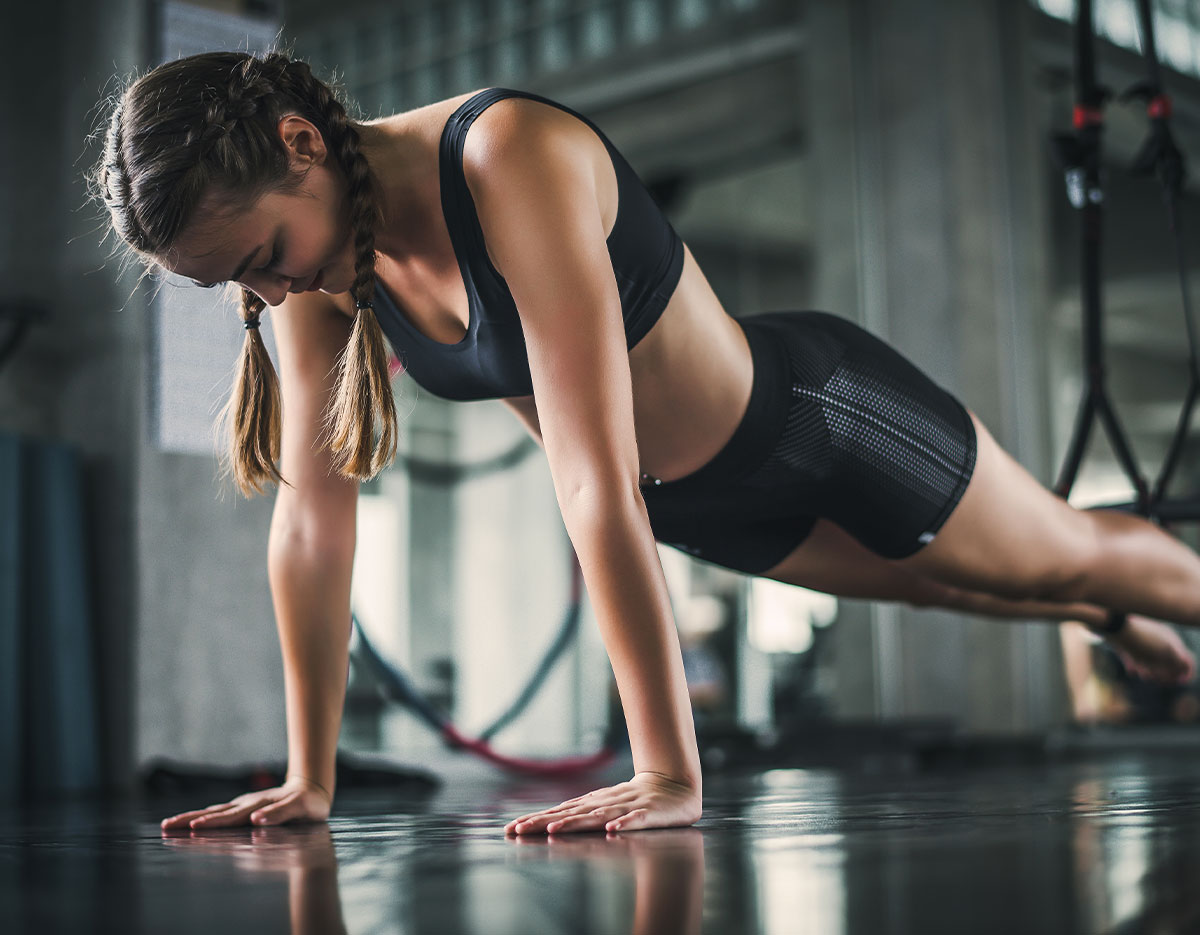
How Exercise Reverses Aging
Improves cardiovascular function that declines with age
Your heart is a muscle, and if it doesn't get enough use, it will get weaker as you get older. According to Harvard Health Publications, regular cardiovascular activity, such as jogging, walking, swimming, and cycling, strengthens the heart and can even partially undo the effects of aging on the organ. With time and inactivity, the left ventricle of your heart and your arteries stiffen, which can cause high blood pressure and hasten the aging of your heart. 150 minutes per week of moderate cardiac activity improves heart function, reduces stiffness, and may even slow some heart aging.
Combats muscle loss that occurs with age
People lose muscle mass with age. Muscle mass decreases about 3 to 8 percent after the age of 30 and declines even faster after age 60, according to research. Resistance exercise reverses aging by combatting this muscle loss and improving your lean muscle mass. If you strength train at least twice per week, you will see improvements in your muscle mass and experience less deterioration of muscles as you age.
Improves balance and coordination and reduces your risk of injuries
Regular cardio exercise and strength training will help you retain and improve your sense of balance and coordination as you age. This is important for a better quality of life for older adults. Aging causes a decline in sensory systems and the musculoskeletal system, and a fitness program that includes strength training and cardio exercise helps slow the decline of balance and coordination that comes with age.
Boosts brain health
Exercise improves mental health benefits and also boosts cognitive functioning. Regular physical activity is linked to reduced risk of dementia, including Alzheimer’s disease, according to studies.
Combats bone loss that occurs with age
Bone mass stops increasing after age 30, and by the 40s and 50s, bone tissue starts to break down more than it’s replaced. Bone mass declines even faster for women after menopause. Resistance training helps slow down this bone loss process from aging, reducing the damage to bones. Strength training helps prevent bone conditions related to loss of bone density such as osteoporosis.
Delays onset of chronic conditions
Exercise helps delay the onset of 40 chronic diseases and conditions, according to researchers. Regular exercise helps prevent and delay the onset of coronary heart disease, diabetes, osteoarthritis, osteoporosis, bone fractures, colon cancer, breast cancer, cognitive dysfunction, hypertension, obesity, and other chronic conditions. (22)
7. Red light therapy can help you sleep well and stay young
Red light therapy (RLT) is a treatment that may aid in the healing of muscle, skin, and other body tissues. You are subjected to very little near-infrared or red light. Your body can sense infrared light as heat even though your eyes cannot see it. Infrared and red light are similar, but red light may be seen. Low-level laser therapy (LLLT), low-power laser therapy (LPLT), and photobiomodulation are other names for red light therapy (PBM).
Medical professionals are interested in light therapy as a secure alternative treatment for photoaging and photodamaged skin. Red or infrared light delivered by light-emitting diode (LED) devices in clinical settings has been found to enhance tissue healing, encourage regeneration, and rejuvenate skin. However, prior studies have not examined the effect of submilliwatt/cm2 levels of red or infrared light on skin in order to determine whether the low level red or infrared light therapy is effective for photoaging. A recent study has suggested that the therapeutic activity of red or infrared light may be effective at much lower energy levels than are used clinically. This study set out to determine whether low-level red or infrared LED light had any impact on the expression of extracellular matrix (ECM) proteins in human skin cells. Figure 16
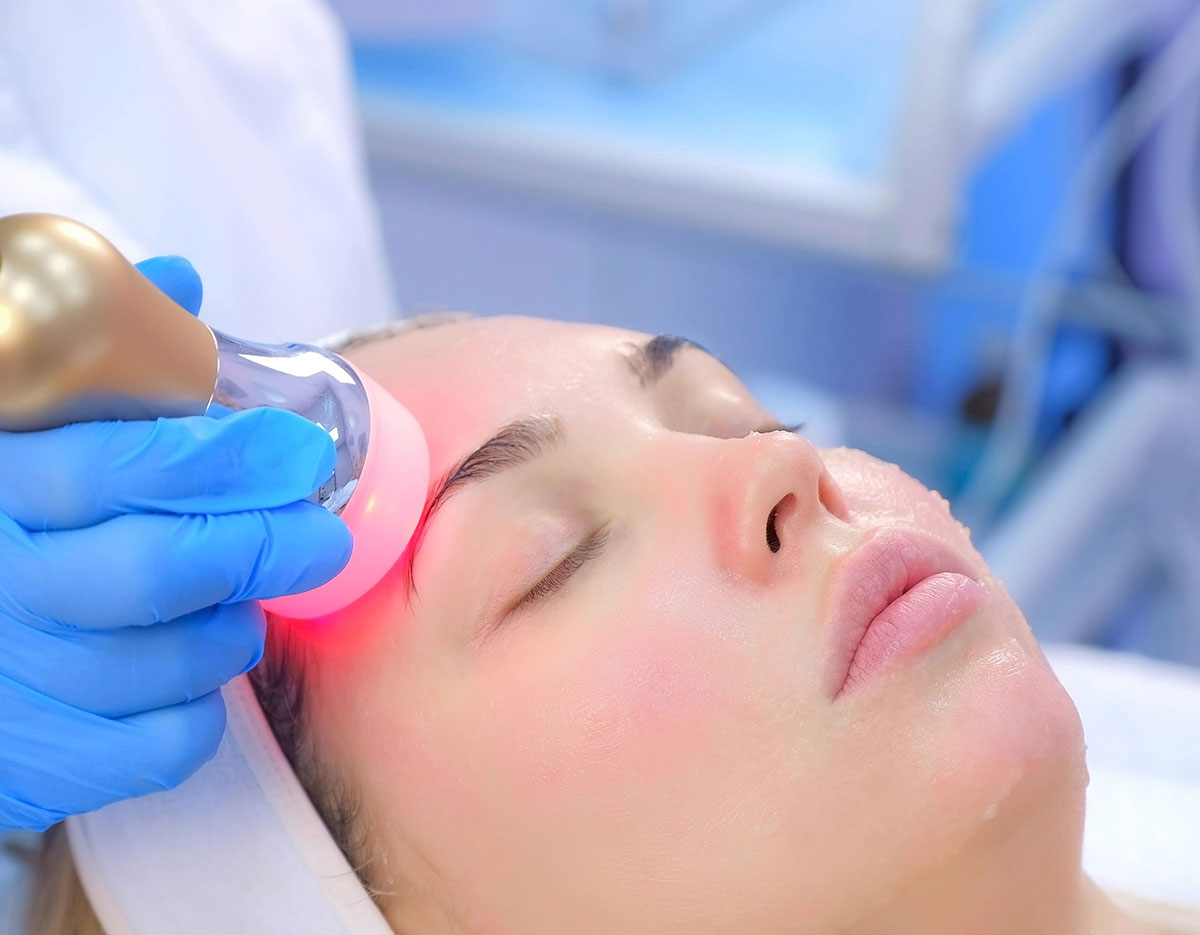
Daily irradiation with red (640 nm) or infrared (830 nm) LED lights or combinations of red/infrared LED lights at 0.3 J/cm2 (0.5 mW for 10 minutes) was used to induce ECM protein expression in primary human dermal fibroblasts or human skin tissues derived through cosmetic surgery. The levels of gene and protein expression were studied using real time qPCR and ELISA, respectively, and histology, respectively. Moreover, ECM cross-linking, an indicator of functioning ECM proteins, was evaluated using a new noninvasive fluorescence technique. Hyaluronic acid synthase (HAS2) and elastin (ELN) gene expression in human fibroblasts was shown to be dramatically increased after as little as 3 days of treatment with low intensity red and infrared LED lighting. Human fibroblasts exposed to red or infrared light also enhanced their production of hyaluronic acid, collagen protein, and elastin protein.
Gene expression of HAS2, ELN, and collagen types Col1A1 and Col3 was similarly induced within 1 week when human skin explants were treated with low intensity red and infrared LED lighting. Furthermore, it was revealed that fluorescence-measured procollagen and elastin fiber production in human skin explants was enhanced after treatment with low-level red and infrared LED lighting. Our findings conclude that exposure to low-intensity red and infrared light strongly induces the expression of extracellular matrix proteins in human skin. As low-intensity red and infrared light boosted anti-aging skin biomarker synthesis, it's worth investigating further. Our results imply that patients with photoaging and photodamaged skin may benefit from regular, at-home therapies using modest levels of red and infrared light. (23)
How Does Red Light Therapy Work?
With red light therapy, you expose your skin to a lamp, device, or laser with a red light. A part of your cells called mitochondria, sometimes called the “power generators” of your cells, soak it up and make more energy. Some experts think this helps cells repair themselves and become healthier. This spurs healing in skin and muscle tissue. (24) Figure 17.
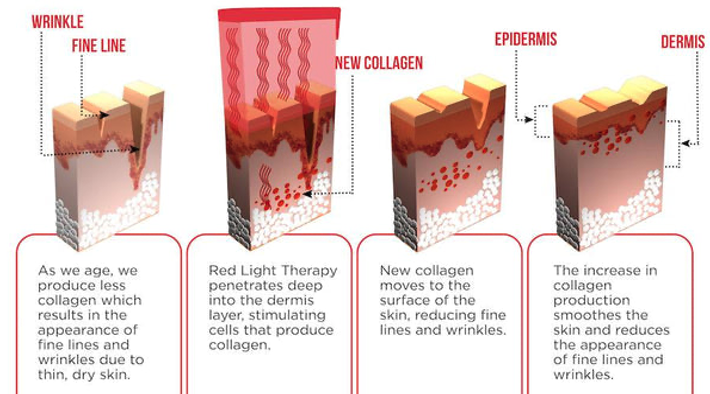
8. Different therapies play role in age reversal
The primary goal of any antiaging therapy is to achieve a smooth, tight, blemish-free translucent skin, with even plane topography and more highlight than shadows.
Antiaging therapies can be grouped under the following headings:
Cosmetologically care
Topical agents
Procedures
Cosmetologically Care
To avoid photodamage, good sun protection is needed. As ultraviolet irradiation inhibits the synthesis of type I procollagen—the skin's primary structural protein—it is recommended that both UVA and UVB protective sunscreens be used. Avoiding hot, frequent, or lengthy baths, as well as detergent soaps and foams, is an important part of a daily skin care practice since they can cause dry skin. Although there is some debate in the scientific literature concerning the long-term effects of moisturizing the skin, many people feel that doing so is the key to unlocking the fountain of youth.
Creams containing collagen, elastin, and essential fatty acids are said to improve the hydrating properties, while estrogen creams are said to slow cutaneous atrophy and collagen loss. Both of these categories fall under the umbrella term "antiaging bioactivators," which describes the ingredients found in OTC cosmeceuticals. But, credible scientific research have not yet shown whether or not any of these compounds actually do. (25)
Topical agents
Tretinoin
Scientific evidence that retinoids can reverse some of the elements of cutaneous aging has been accumulated over time. Figure 18. All-trans retinoic acid produces improvement of wrinkles by inducing synthesis of collagen I within the papillary dermis and decreases abnormal elastin and melanin. Only tretinoin and tazarotene have been FDA-approved antiaging agents. To avoid ′retinoid dermatitis′ the recommendation is to start with the mild formulation of 0.25% every other day or twice weekly. With regular use, patients will be able to tolerate increased frequency of application and stronger preparations over time. Both extrinsic and intrinsic aging respond favorably to exogenously applied retinoids. (26)
Vitamin C
Topical use of vitamin C heralded the entry of the antioxidants into skin care. Besides antioxidant property, vitamin C has shown to stimulate both type I and type III collagen synthesis. Although many topical preparations containing vitamin C are available, most of them have problems with stability and their utility is questionable. (27)
Alpha hydroxy acids (AHA)
Topical application of AHA in photodamaged skin has shown clinical improvements in wrinkling, roughness and dyspigmentation within months of daily application.
Procedures
There are various procedure that you can undergo to keep yourself young for a longer period of time. These procedures are as following:
Reverse aging technology
Reverse aging technology has garnered significant attention in recent years due to its potential to improve health and longevity. One promising approach to reverse aging is using stem cells, which can regenerate damaged tissues and improve overall cellular function. The potential benefits of stem cells as an anti-aging therapy include cell rejuvenation, improved organ function, and reduced risk of age-related diseases. While more research is needed to fully understand the potential of stem cells for reversing aging, the early results are promising. They suggest that stem cell therapy may play a key role in developing.
Stem cell benefits for patients who undergo stem cell therapy for anti-aging can usually expect:
Can stem cells cure aging?
Stem cell rejuvenation is a type of therapy used to combat the effects of the natural aging process. A large amount of youthful stem cells can be injected into the patient via IV. These are intended to replace ones existing “old” cells, thus allow to body to work more efficiently by reducing inflammation, modulating the immune system and promoting tissue repair and regeneration. With our current knowledge of stem cells, it is technically feasible to delay aging and improve both health and lifespan. Stem cells can play a crucial role in delaying the aging process. Stem cells, in combination with anti-aging genes, can create a sophisticated shield, which can prevent the effects of aging.
Increased wear and tear of the body’s natural stem cells, increases cellular damage, and accelerate the natural process of aging. Stem cells combined with anti-aging genes can potentially absorb the process of cellular aging. The introduction of “youthful” stem cells into the human body can rejuvenate existing cells and allow the body to age more gracefully & even reverse some effects of the aging process. (28)
Bone marrow transplants beneficial for the aging process
To avoid photodamage, good sun protection is needed. As exposure to UV rays decreases type I collagen formation, it's important to choose and use sunscreens that provide enough protection from both UVA and UVB rays. There is no proof that a bone marrow transplant has anti-aging effects at this time. In the case of bone marrow transplants, healthy bone marrow from a donor or the patient themself is used to replace sick or damaged bone marrow. Bone marrow transplants are performed to address diseases and conditions that directly impact the bone marrow, such as leukemia and aplastic anemia.
Bone marrow transplants are life-saving therapies for certain illnesses, but there is no proof that they slow or stop aging in any way. Stem cell research is currently being conducted, and additional studies are needed to fully grasp the potential of stem cells to prevent aging. (29)
TRT (testosterone replacement therapy)
Testosterone levels tend to be highest in early adulthood and later adolescent. Testosterone levels drop steadily after age 30 or 40, often by around 1% each year. Determining whether a man's low testosterone is the result of aging or a medical condition is vital (hypogonadism). Hypogonadism occurs when the testicles or the pituitary gland (which regulates the testicles) are unable to generate enough testosterone. The symptoms of low testosterone in these men can be alleviated by testosterone replacement treatment in the form of injections, pellets, patches, or gels.
It is unknown whether healthy older men would benefit from testosterone therapy, despite the fact that testosterone therapy can reverse the consequences of hypogonadism. While there may be anecdotal evidence that testosterone supplements might make men feel younger and more energized, there is little evidence to support its usage in men who are otherwise healthy. Although the American College of Physicians' guidelines suggest that testosterone treatment may help certain men's sexual performance, there is less proof that it helps with other functions like vitality or energy. (30)
Bryan appears to be able to keep his calorie intake so low because he is in a vicious loop of lowering his testosterone levels and then artificially raising them using testosterone patches and the steroid hormone DHEA. Fasting and calorie restriction have been shown to have positive effects on signaling changes in hormone and biological pathway levels, but Bryan is probably nullifying these effects by utilizing testosterone patches. Although while the patches may temporarily restore his sense of youth, TRT is harmful to his health and longevity. (31)
Cure for aging
References:
